-
History & Society
- Education in Pre-war Hong Kong
- History of Taikoo Sugar Refinery
- Hong Kong Products Exhibition
- Local Festivals Around the Year
- Post-war Industries
- Pre-war Industry
- The Hong Kong Jockey Club Archives
- Tin Hau Festival
- Memories We Share: Hong Kong in the 1960s and 1970s
- History in Miniature: The 150th Anniversary of Stamp Issuance in Hong Kong
- A Partnership with the People: KAAA and Post-war Agricultural Hong Kong
- The Oral Legacies (I) - Intangible Cultural Heritage of Hong Kong
- Hong Kong Currency
- Hong Kong, Benevolent City: Tung Wah and the Growth of Chinese Communities
- The Oral Legacies Series II: the Representative List of the Intangible Cultural Heritage of Hong Kong
- Braving the Storm: Hong Kong under Japanese Occupation
- A Century of Fashion: Hong Kong Cheongsam Story
Geography & EnvironmentArt & Culture- Calendar Posters of Kwan Wai-nung
- Festival of Hong Kong
- Ho Sau: Poetic Photography of Daily Life
- Hong Kong Cemetery
- Sketches by Kong Kai-ming
- The Culture of Bamboo Scaffolding
- The Legend of Silk and Wood: A Hong Kong Qin Story
- Journeys of Leung Ping Kwan
- From Soya Bean Milk To Pu'er Tea
- Applauding Hong Kong Pop Legend: Roman Tam
- 他 FASHION 傳奇 EDDIE LAU 她 IMAGE 百變 劉培基
- A Eulogy of Hong Kong Landscape in Painting: The Art of Huang Bore
- Imprint of the Heart: Artistic Journey of Huang Xinbo
- Porcelain and Painting
- A Voice for the Ages, a Master of his Art – A Tribute to Lam Kar Sing
- Memories of Renowned Lyricist: Richard Lam Chun Keung's Manuscripts
- Seal Carving in Lingnan
- Literary Giant - Jin Yong and Louis Cha
-
History & SocietyGeography & EnvironmentArt & Culture
-
View Oral History RecordsFeatured StoriesAbout Hong Kong Voices
-
Hong Kong Memory
- Collection
- All Items
- Industrial Professionals
Recently VisitedIndustrial Professionals
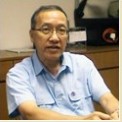
- Background of chemical engineering. His career in China Dyeing Works. Qualification and career pr...
Chan Kin Keung's qualifications. Chan King Keung was born in Hong Kong. He studied chemical engineering in Taiwan. He also picked up some dyeing knowledge as dyeing and printing were among subjects he had studied. At that time Hong Kong Polytechnics had already had a textile department. But nowadays the syllabus put more emphasis on merchandising instead of the technical craft. Vocational Training Council and Clothing Industry Training Authority also provided textile courses for the training of elementary workers in quality control. Most of them would want to work in mainland China after graduation.
Technical background of dyeing factory workers in the earlier days. At that time not many university graduates were willing to work in a dyeing factory. Those with a secondary school education could start work at China Dyeing Works as apprentices.They were provided with living quarters and possibility of promotion.Those apprentices were now supervisors who were major workforce of production department. Undergraduates from Hong Kong Polytechnics studying textile and merchandising would work at China Dyeing Works.Although they would become supervisors in various departments, they would not stay on for too long. Most of them would seek other opportunities such as testing and merchandising jobs.Working in a dyeing factory was not an attractive prospect for them because it was very hot in a dyeing factory. Long working hours was also required. China Dyeing Works was like the Shaolin Temple of the industry. People who come here to earn a good foundation and afterward it would be easier for them to look for other jobs outside.
When Chan Kin Keung joined China Dyeing Works, his seniors were from Hong Kong Polytechnics and universities in Taiwan. There were no graduates from The University of Hong Kong. When he started working there, both the plant manager and canteen supervisor were from Shanghai. In the earlier days most of the supervisors of the plant were from Shanghai. It took them no time to be assimilated to the Hong Kong society.
Since time had changed, local dyeing industry has shaken off the influence from older generation of Shanghainese. It was not difficult to find information on dyes as there was a saying that the six major dyes manufacturers would come to the dock to look for business. Larger dyes manufacturers such as ICI, Hoechst, Ciba, Bayer, BASF and Sandoz would introduce paints to their customers with samples as well as provide technical support. Since getting hold of paints was easy, so the industry grew fast. When one company could grasp a special usage of a certain paint, this would become a selling point and the company could monopolize the market.
Application of Chemical knowledge in the dyeing business. Chan Kin Keung has been applying his chemical knowledge into dyeing work. He knew that different paints need to be mixed with different chemical ingredients before they can be used. He believed that there was not that much knowledge of chemistry that can be applied to dyeing. But knowing some bio-chemistry would definitely help. He said dyeing knowledge can be picked up from books, and then apply it at work. Through trial and errors one can improve his/her skill.
Chan did not choose to study at the Hong Kong Polytechnics because at that time the Polytechnic was a vocational institute, not a university. He chose to study in Taiwan and applied Cheng Kung University because it has a good engineering faculty.
China Dyeing Works' research and development. When Chan Kin Keung joined the business, China Dyeing Works had no research and development department. When the company established its factory in Tsuen Wan, there was a lab where research would be done. For instance, printing quality was examined. If results were satisfactory, the fabric sample would be taken to the production line.Chan said he did not know very well of the research being done at the company when he first joined it, but he was sure that the plant manager and supervisors constantly had new ideas.He recalled that in 1972 when he joined the company, there were a few employees who had degrees in chemistry, including graduates from colleges inTaiwan and Hong Kong Baptist College.
The reason why Chan Kin Keung decided to join China Dyeing Works. When Chan joined China Dyeing Works, the company was already running at a substantial scale. It had developed a trainee programme, and Chan wanted to put his textbook knowledge into practice. So he wrote a letter to the company looking for a job, and after an interview he was accepted. He took great interest of his work all along. In 1979 to the end of 1986, he was sent to West Africa to work amongst the management team to oversee production. From 1987 to 1992, he left the company and migrated to Australia. During that time he was working at a printing factory there. In 1992, China Dyeing Works was planning to move to a new factory, and asked Chan to rejoin the company.
For Hong Kong students who would like to study in Taiwan, they should sit a joint examination for admission to tertiary institutions. Chan was graduated from Pui Ying Secondary School (at Babington Road). His grades at school were good and he was nominated to National Cheng Kung University(NCKU) in Taiwan.He was accepted without taking the joint examination. During the first year he was awarded a scholarship. NCKU was located in Tainan where the living cost was very low.
Chan Kin Keung's career development at China Dyeing Works. When Chan first joined China Dyeing Works, he was placed at the printing department. He was responsible for the preparation of printing paste. After three months, he was promoted to supervisor of the printing department, responsible for printing technique and production. At that time the factory was running with two 8-hour shifts. Living quarters were provided to the workers. In 1975, Chan was promoted to assistant manager of the printing department. And in early 1979, he was sent to work in Nigeria, West Africa. At that time, the company had 10 factories in Nigeria. Chan was responsible for the management of UNTL plant's printing department which focused on wax printing production. In 1986, he migrated to Australia. In 1992, Chan came back to Hong Kong. He then worked as assistant plant manager at the company's factory in Tsuen Wan. He was responsible for production which covered technical issues, prioritizing orders and machine repairs, etc. Later on he also took up sales mission, including visits to clients, price negotiation, getting orders and arranging production schedule, etc. In 2006 he was promoted to Assistant General Manager. The Managing Director was at the Central office. The company established close relationship with its clients. An agent and sales representatives were employed in London and New York respectively.
When Chan joined the company in 1972, the owner, Cha Chi Ming was working at the Central office in the Swire Building. At that time, the office was in Central while the factory was in Tsuen Wan. Cha was an entrepreneur and he regarded himself as a textile industrialist. He was very keen in finding new technologies. He established two foundations in the mainland. Qiu Shi Science and Technologies Foundation concentrated on technologies. Sang Ma Trust emphasized on the advancement of textile technology and it had a great impact on China's textile industry.
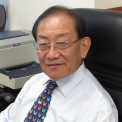
- Becoming the General Manager in Ampex responsible for labour management
Lee stressed that he never had any prior knowledge in management when he became General Manager. The plant worked upon a three-shift basis. The morning shift lasted from 7am to 3pm, the afternoon shift from 3pm to 11pm, and night shift from 11pm to 7am. Lee would arrive at work before 7am and make a round of inspection at 7am and 3pm respectively. Occasionally he returned to his office at 11pm to show to the workers that he was with them and be there for them. Lee had developed a close relationship with the workers and made an outstanding performance in the industry. In its heyday, there were 3,800 workers at Ampex, making internal communication difficult. Therefore, Lee set up an amplifier in the plant and assigned all announcements to be made by a female worker with a beautiful voice. Music was played from time to time to forge a delightful working environment. He also installed air-conditioning and made sure the floor tiles were waxed in order to make the environment clean and comfortable. He offered the workers an attractive remuneration package with a wage that was 10% above the industry average. The factory was particular about technological standards, so the female workers who operated a microscope must have their eyes checked regularly. In addition, Ampex asked its female workers to wear uniforms to work.
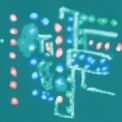
- Staff training and management in South Sea Textile Manufacturing Company
At South Sea Textile Manufacturing Company, Chi Woo Wha, as an apprentice, learned welding, electrical works and repair and maintenance of textile machinery. When Central Textiles moved its operation, Chi Woo Wha had helped in installing spinning looms. He left the company after completing the installation work because there were no vacancies in either Central Textiles’ spinning or weaving factories. South Sea Textile Manufacturing Company initially ran a spinning factory, and later opened a weaving factory. Chi Woo Wha had finished apprenticeship at both spinning and weaving mills, but he was more familiar with weaving machines. Therefore, he helped Central Textiles’ spinning factory to install the machinery while keeping his day time employment with South Sea. When Central Textiles’ weaving factory resumed operation after relocation, Chi Woo Wha came along to help outside his regular working hours at South Sea. However, his full-time employer was not happy to learn that Chi Woo Wha was also working at Central Textiles and stopped him from doing so. Tse Tak Leung, Central Textiles’ spinning factory manager, successfully convinced Chi Woo Wha to leave South Sea and to work under him. Chi Woo Wha accepted Tse Tak Leung’s offer because Tse was a former engineer at South Sea Textile Manufacturing and the two workmates used to be on good terms. Chi Woo Wha also thought that as a new operation, Central Textiles’ spinning factory promised better prospects for promotion. Chi Woo Wha was employed as an apprentice in the weaving department of South Sea, and promoted to technician after the two years’ apprenticeship. After he left Central Textiles’ spinning factory, Chi Woo Wha moved on to work for South Asia Textiles in To Kwa Wan as an operation officer, arranged by Tse Tak Leung. While there, he was involved in the management and scheduling of the production department. This position was similar to an engineer at a large factory.
The premise of South Sea Textile Manufacturing Company was very spacious. The company offered training on textile technology and English. The company also provided tutorial classes for female workers to learn sewing and knitting. Back in those days, workers were allowed to go out once a week. The rest of the time, everyone spent their after work hours in the factory’s school, canteen, playground and library. At that time, South Sea was situated at the area which is now the Belvedere Garden (i.e. 9½ Milestone on Castle Peak Road in Tsuen Wan). The factory’s owner was Tang Sing Hoi, who is also remembered for founding the Community Chest.
Many spinning factories were located near the spinning mills of South Sea Textile Manufacturing Company. Central Textiles’ spinning factory was next to The Textile Corporation of Hong Kong. Next to South Sea Textile, there were also The Textile Corporation of Hong Kong, South Textiles and Hong Kong Woollen Knitting Factory. Today, Central Textiles’ weaving factory is situated in Kong Nam Industrial Building, which was formerly the premise of South Textiles.
The life and wages of South Sea textiles workers at that time. As it had to use intensive labour to work for shifts round the clock, South Sea Textile Manufacturing Company insisted that all of its 1,000 or so workers lived in the dormitory inside the factory premise. As the spinning machines at that time were not efficient, it relied on intensive labour to keep up the productivity. Initially workers worked for 12 hours per shift. It was changed to 8 hours and 3 shifts in a day later on. The factory also had its own clinic manned with nurses on three shifts a day, plus a private doctor who came for consultations once a week. The typical wage for apprentices here was only $1 per day and apprentices also had to sign a two-year’s training contract. The daily wages for ordinary workers and technicians were between $4 to $5 and $6 to $7 respectively, whereas the monthly salary for supervisors was $300-$400. As far as the prices of commodities back then were concerned, newspapers were sold at 10 cents and a bottle of coke cost 30 cents.
Back then, Central Textiles’ spinning’s facility was smaller in scale than the set up at South Textiles and Shanghai Textiles. Central Textiles’ spinning factory offered workers a dormitory which was outside the factory premise. It had similar management style as that in South Sea Textile, such as the ways of job arrangement, management of machines and equipment, and the allocation of workshop spaces. South Sea Textile was better equipped and used more advanced machines. In the 1980s, South Sea Textile was finally closed down because its owners did not have a successor to continue the business. Chi Woo Wha heard that the factory premise was sold to Amoy Food.
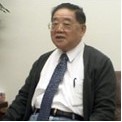
- Education background and starting his career
Cheng Chi Ping was born in 1931 in Shanghai, and moved to Hong Kong in 1948. He studied at the Lingnan University in Guangzhou. Because of the Korean War, he could not finish his study and went back to Hong Kong. His father knew some textile industrialists from Shanghai, so Cheng also decided to join the business, and became a trainee at a weaving factory owned by a friend of his father. The factory was located at Castle Peak Road, just opposite to Hong Kong Spinners, operated by a textile industrialist from Shanghai. The factory would buy cotton yarns from Hong Kong Spinners, and then made woven twill. Its fabrics were sold in Hong Kong, Southeast Asia and the UK, etc, for the production of mainly khaki pants. The factory operated with day and night shifts. When Cheng was a trainee, he was on the job twelve hours a day. He learned how to operate the weaving machines and managed the workers from a foreman, and read books on textile during his free time.
After a year as a trainee, Cheng left the factory and went to Japan. As he wanted a career in the textile industry, he enrolled himself at the Kyoto Institute of Technology to study textile at its fibro-science faculty. Under a 4-year university programme there, Cheng studied general subjects including mathematics and history during the first two years. From Year Three onwards, he studied textile related subjects including fibro-mechanics and quality control, etc, with an emphasis on production technique. At that time, Japanese universities' textile courses were quite famous with a more comprehensive curriculum. Even silkworm farming and silk reeling were taught.
In 1959, Cheng graduated and returned to Hong Kong. The local textile industry was at its boom at that time. More spinners and textile factories were established, with as many as 34 spinners at one time. With the referral of his former boss, Cheng got a job as an administrator at Central Textiles (Hong Kong) Ltd. Central Spinners was the spinning division of Central Textiles. Cheng was assigned to the testing department (its quality control section now), and was responsible for the inspection of spun yarns and to learn the craft of spinning. The then factory director and engineer of Central Spinners were both from South Sea Textile Manufacturing Co. Ltd. The factory director and the engineer were once the engineer and supervisor of South Sea Textile respectively. They both had degrees in textile from universities in Shanghai. During the end of 1950s when Central Spinners was first established, its engineer had to oversee management technique and human resources, but not sales and marketing. When Cheng was a trainee, he followed the engineer and factory director to learn spinning and management. [Editor’s Note: Central Textiles (Hong Kong) Ltd first established its fabric business. Then in 1957 the company bought a piece of land in Tsuen Wan and built Central Spinners. Central Fabrics and Central Spinners were both operated under Central Textiles.]
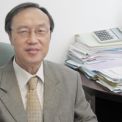
- Unforgettable experience during the first year of work: Making up this deficiency of professional...
Having graduated from university, Wong applied for a job in electronics factories. He was accepted by the Hong Kong branches of both Motorola and Ampex Ferrotec. As Ampex manufactured core memory and Wong was enthusiastic in computers, he decided to work in Ampex as an engineer. At that time, the technology of magnetic core was used for manufacturing core memory, and Wong had not studied anything related to digital circuit when he was in university. Students of Engineering Department of The University of Hong Kong were required to study a 3-year programme which aimed at providing them with fundamental knowledge. In the subject of Electronics, they mainly studied the technologies of speakers and transistor, not including new technologies such as digital circuit. In order to make up this deficiency, Wong borrowed books on Boolean Algebra from the library of The University of Hong Kong. He stressed that one had to learn continuously as not all the knowledge acquired in school would be useful in his work. In reminiscence, Wong thought that he was destined to be involved in electronics industry as transistor was launched when he was born, and integrated circuit had just been introduced when he graduated from university. He talked about the unforgettable experience during the first year of work. On the Eve of the Chinese New Year, he worked overnight with his boss in Ampex, testing equipment for the US headquarters so the results could be sent to USA on New Year Day. To Wong, working overtime was a responsibility. He advised the youths not to mind doing extra work but to follow the example set by people of the last generation.
Copyright © 2012 Hong Kong Memory. All rights reserved.
| Set Name |





